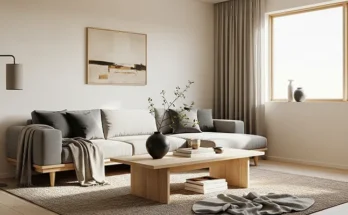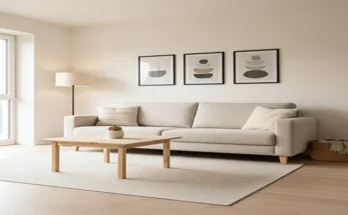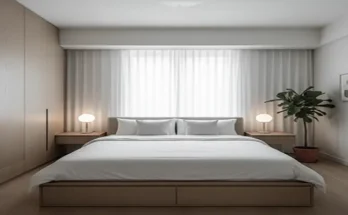Open floor plans are celebrated for their airy feel, abundant light, and seamless flow, yet they present a unique challenge: how to define zones and maintain cohesion without clutter. The answer lies in functional minimalist furniture. This style isn’t just about aesthetics; it’s about intelligent design that serves multiple purposes, respects visual space, and contributes to a calm, uncluttered environment – perfectly suited for the expansive nature of an open layout.
The Principles of Functional Minimalism for Open Plans
Before diving into specific pieces, understand the core tenets:
- Multi-Functionality: Pieces that serve more than one purpose are invaluable (e.g., an ottoman with storage, a console that doubles as a desk).
- Clean Lines & Simple Forms: Avoid ornate details. Straight lines, gentle curves, and unadorned shapes keep the visual noise to a minimum.
- Neutral Color Palette: Whites, grays, blacks, and natural wood tones create a cohesive look that doesn’t overwhelm an open space.
- Quality Over Quantity: Invest in well-made, durable pieces that will last and stand up to daily use. Fewer, better items are key.
- Visual Lightness: Furniture with slender legs, open bases, or transparent elements (like glass) allows light to pass through, maintaining an open feel.
- Defined Zones, Not Barriers: Furniture should subtly delineate areas without creating physical or visual blocks.
Essential Furniture Pieces for Open Floor Plans
Here are the top categories and specific pieces that excel in a functional minimalist open-plan setting:
1. Seating: Defining Comfort Zones
- Low-Profile Sectionals & Sofas: Instead of bulky armchairs, a sleek, low-profile sectional can effectively define a living room zone without towering over the space. Look for designs with clean lines, minimal ornamentation, and durable, neutral upholstery.
- Why it works: Provides ample seating while subtly bordering the living area.
- Armless Chairs & Ottomans: These are versatile and can be easily moved. An armless chair maintains an open sightline, while an ottoman can serve as extra seating, a footrest, or even an impromptu side table.
- Why it works: Maximizes seating flexibility without adding visual bulk.
2. Storage: The Art of Disappearing Acts
- Integrated Wall Units/Built-ins: If possible, custom built-ins that blend seamlessly with the walls offer maximum storage without protruding into the open space. This is the ultimate minimalist storage solution.
- Why it works: Provides extensive, hidden storage that maintains clean lines.
- Low-Slung Media Consoles/Sideboards: Rather than tall entertainment centers, opt for long, low consoles. These provide surface area and storage without blocking views. Look for designs with push-latch doors for a handle-free, streamlined look.
- Why it works: Keeps media equipment and clutter out of sight, maintains horizontal sightlines.
- Floating Shelves: For displaying a few curated items, floating shelves are ideal as they don’t have visible supports, contributing to a lighter feel.
- Why it works: Offers display space without visual weight.
3. Tables: Versatility and Transparency
- Nesting Coffee Tables/Side Tables: A set of nesting tables offers flexibility – use them together as a main coffee table or pull them apart for individual use as needed.
- Why it works: Adaptable to different needs and easily tucked away.
- Lightweight or Glass Coffee Tables: A glass top or a table with a very slender frame provides a surface without feeling heavy or obstructing the view across the room.
- Why it works: Maintains an open, airy feel, allowing light to pass through.
- Console Tables (as Room Dividers): A sleek, low-profile console table can subtly define the edge of a living or dining area when placed behind a sofa or along a wall.
- Why it works: Creates a visual boundary without a solid wall.
4. Dining: Simple Elegance
- Streamlined Dining Tables: Choose tables with thin tabletops and slender legs. Materials like light wood, glass, or even a polished concrete top can work well.
- Why it works: Doesn’t dominate the open space.
- Stackable or Armless Dining Chairs: These contribute to a lighter aesthetic and can be more easily stored if space is at an absolute premium.
- Why it works: Minimizes visual clutter around the dining area.





